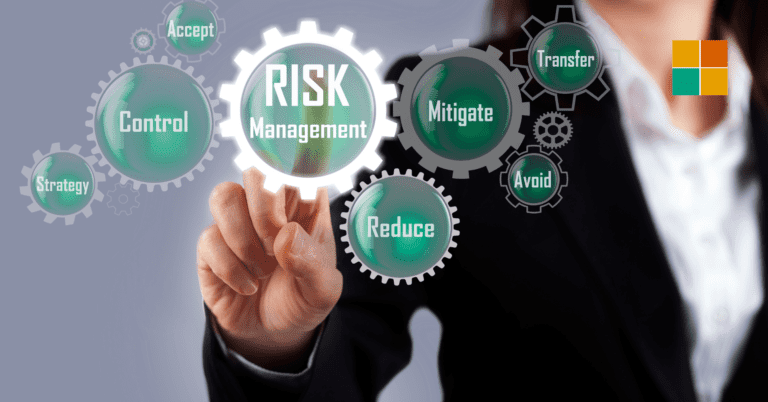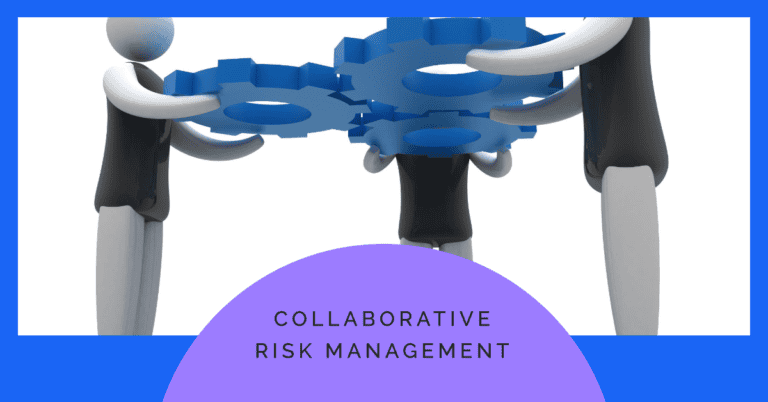Are you ready to learn about risk analysis? This might sound alarming, but it doesn’t have to be. Understanding the risk analysis process can be helpful and even enjoyable.
We all manage risk daily in our personal and professional lives, and if I were you, I’d’ want to be as good at it as possible.
Let’s’ start by defining risk analysis as an integral part of risk management.
What is Risk Analysis?
Risk analysis is “what could change and how to handle it.” Risk management is mapping solutions to potential changes—the general practice of dealing with uncertainty when making decisions. Whether you’re considering a multi-year project at work or a significant life change, risk analysis can help you make better decisions.
The Risk Analysis Process: A Step-by-Step Guide
1. Risk Identification
The first step in any risk analysis is identifying the different risks. This sounds simple, but it depends on listing any “What if?” events or conditions that could impact your project or decision. The more risks you identify upfront, the better prepared you’ll be.
2. Risk Assessment
Having identified the risks, assessing them is the next step – a complex question that depends on two general approaches.
- Qualitative Risk Analysis: assessing risks based on their probability of occurring and potential impact. For example, you might map them on a risk matrix – a grid with an axis for likelihood and severity
- Quantitative Risk Analysis: you evaluate risks with (numerical) values – as if you calculate the expected monetary value (EMV) – or use statistical methods to find out how likely the risk is to happen and what the probable cost would be
3. Risk Evaluation
You must then assess which risks are the most serious and address them first. Risk prioritisation allows you to allocate your resources to the most severe risks.
4. Risk Treatment
Now for the doing part! Risk treatment consists of what to do about each of your identified risks. Among the array of things you can do are:
- Risk Reduction: taking steps to reduce the likelihood or impact of a risk
- Risk Avoidance: changing plans to eliminate the risk entirely
- Risk Transfer: shifting the risk to another party, often through insurance or outsourcing
- Risk Acceptance: the decision to accept the risk if the expected impact is low or it would be too expensive to manage the risk
5. Monitoring and Review
Risk treatment shouldn’t be the final step in your risk analysis. You must monitor risks and check your strategies, ensuring that risk management remains relevant as circumstances change.
Types of Risk
Another useful concept to keep in mind as we unpack the risk analysis process itself is that risks themselves often come in different flavours, as illustrated here in this list of common types:
- Operational Risk: is the risk that comes from day-to-day, such as things like equipment failure, supply chain disruption, human error
- Financial Risk: this category includes the risk of loss of money due to reasons such as fluctuation in the market, credit default or cashflow-related issues
- Strategic Risk: these risks relate to significant business decisions, such as entering new markets, launching new products or mergers and acquisitions
- Project Risk: for project managers, these could have to do with adding time and money to completing a project or, more directly, with project performance
- Compliance Risk: these risks involve legal and regulatory requirements. A firm cannot afford to not comply with laws or industry standards (or required principles) because this will result in heavy fines, a lawsuit or loss of reputation
Tools and Techniques for Risk Analysis
Having gone over the necessary background material, now is the time to focus on some tools and techniques that might come in handy for risk analysis:
- Risk Register: a document listing all the identified risks, their assessment and planned responses. This is an essential tool in tracking and managing risks throughout a project or broader operation
- Risk Matrix: an information graphic used to prioritise risks based on their likelihood and the extent of their impact
- SWOT Analysis: typically employed as a strategic planning instrument but can be used to identify risks (weaknesses/threats and strengths/opportunities)
- Fault Tree Analysis: a technical method using logic to investigate the multitude of possible causes of a particular undesired event
- Monte Carlo Simulation: a statistical approach for quantitative risk analysis characterised by simulation of chance-based outcomes for decisions with multiple uncertain variables

Risk Analysis in Action: A Simple Example
To illustrate the process, consider a simple example of a risk analysis: Let’s’ imagine you’re planning to host an outdoor wedding:
1. Risk Identification:
- Bad weather
- Vendor no-shows
- Guest transportation issues
- Food safety concerns
2. Qualitative Risk Assessment:
- Bad weather: medium probability, high impact
- Food safety (poisoning): low probability, high impact
- Vendor no-shows: low probability, high impact
- Guest transportation: medium probability, medium impact
3. Risk Evaluation:
Because our best risk-assessment tools say we should, we might decide to deal with bad weather and food poisoning first.
4. Risk Treatment:
- Bad weather: rent a tent or secure an indoor backup venue (mitigation and contingency planning)
- Food safety: hire a reputable catering company with good reviews and proper certifications (control)
- Vendor no-shows: have backup vendors on standby (mitigation and contingency planning)
- Guest transportation: provide clear directions and consider arranging shuttle services (control)
5. Monitoring and Review:
Monitor weather reports as the day approaches and regularly contact vendors to ensure all runs smoothly.
The Importance of Effective Risk Management
Obtaining a clear grasp of how the process of risk analysis works should help to improve risk management by allowing risk to be better identified, analysed and addressed. Organisations and individuals armed with the tools of risk analysis can:
- Make better and more informed decisions
- Reduce the likelihood and impact of adverse events
- Increase the likelihood and impact of positive events
- Improve resource allocation
- Increase the chances of success
- Enhance overall performance and resilience
Enterprise Risk Management (ERM)
For large entities, risk management tends to take the form of enterprise risk management (ERM)—a coordinated, holistic, and structured approach to risk assessment and risk responses across all organisation functions to develop a risk-aware culture. Those involved in ERM make risk management the responsibility of the entire organisation.
The Role of Risk Managers
In some organisations, a formal risk analysis process will probably be managed by a dedicated risk manager responsible for the following:
- Developing and implementing risk management strategies
- Facilitating risk assessments
- Creating and maintaining risk registers
- Advising leadership on risk-related decisions
- Promoting a risk-aware culture throughout the organisation
Challenges in Risk Analysis
Understanding how risk analysis works is beneficial. But it isn’t always straightforward. A few common problems include:
- Risk: defining the thing you’re not sure about is manageable, but making that definition correct is another matter and depends on your point of view
- Bias: viewing or judging risks based on our prejudices and opinions is natural. Therefore, be conscientious about trying to be as objective as possible and make sure that risk analysis involves as many different viewpoints as possible
- The timescale: modern society has to think about risks on timescales that were beyond the horizons of earlier thinkers
- Process: risks can evolve along with the organisation. A particular risk that is deemed low priority today might become critical tomorrow because of new circumstances
- Resource sensitivities: a thorough risk analysis can be expensive and time-consuming. Organisations need to balance the depth of analysis with available resources
Risk Analysis in Different Fields
Although we’ve talked about business and project contexts, there are several areas in which risk analysis is used, such as:
- Finance: Banks and other financial institutions perform quantitative risk analyses to assess credit, market, and other financial risks.
- Medicine: risk analysis is vital to patient safety, drug development and public health planning
- Environmental science: scientists use risk analysis to assess the effects of pollution, climate change, and other ecological dangers on human health and ecosystems.
- Cybersecurity: IT professionals use risk analysis to identify and address potential vulnerabilities
- Insurance: the entire insurance business is based on the science of risk analysis, which prices policies through actuarial calculations

Final Thoughts: Embracing Risk Analysis
Risk analysis is not so much a business skill as a general life skill. Identifying, evaluating, and responding to risks will lead to better decisions in all aspects of life.
Remember that risk management is not about eliminating all risks. A healthy dose of risk-taking is often essential for growth and innovation. Instead, sound risk management involves making informed decisions, preparing for difficulties, and maximising one’s odds.
So, if you ever need to decide, develop a plan, or generate a new idea, consider using some risk analysis approaches. You might be surprised at how much easier the landscape looks once you’ve taken the time and effort to see what lies in the shadows.
When taking calculated risks, stay curious, ready, and courageous. The riskiest move of all is not taking any risks at all!






